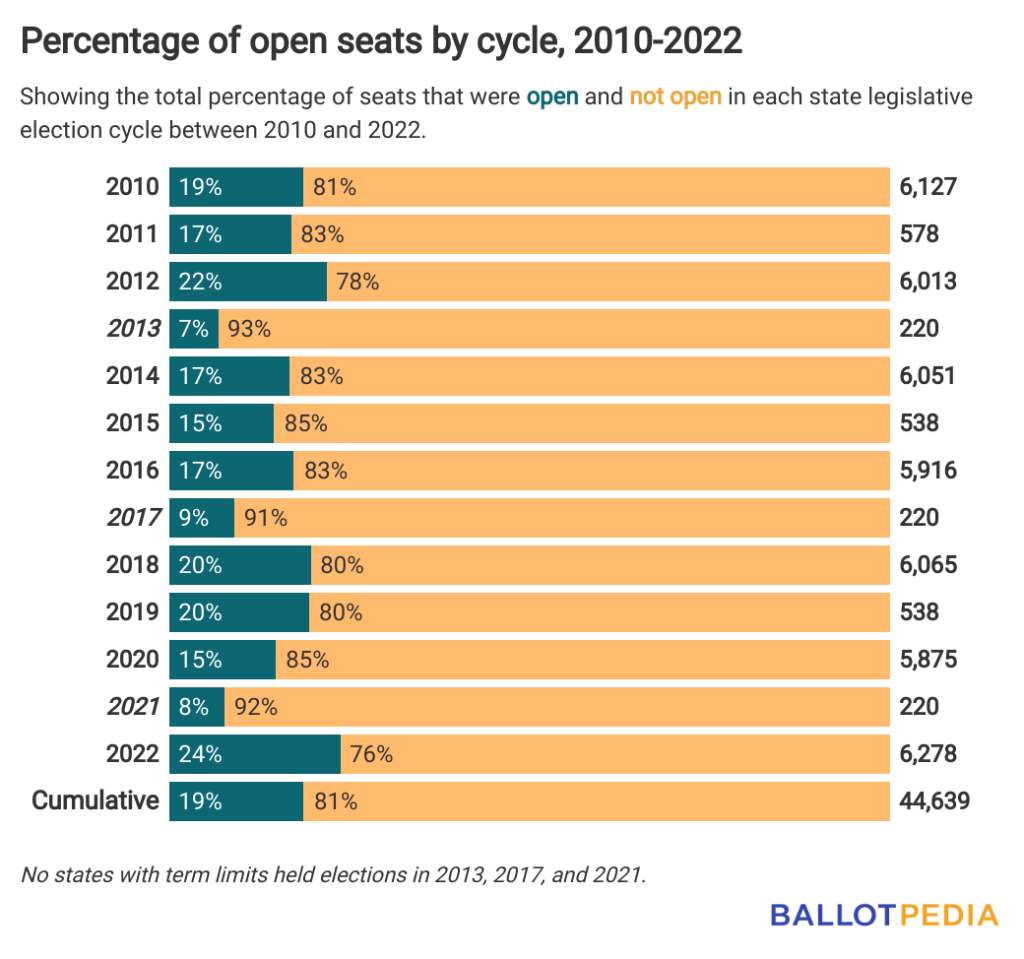Since 2010, Ballotpedia has covered state legislative elections to 44,639 seats across all 50 states over 13 election cycles.
During that time, 8,404 of those seats have been open, those where no incumbents ran for re-election.
That represents 18.8% of all seats up for election between 2010 and 2022.
The key determinant of the magnitude of open seats in a particular state is whether that state has term limits, which specify how long a legislator can remain in office until they are required to leave by law.
All 10 states with the largest percentage of open seats since 2010 have term limits. The remaining six states with term limits all fall in the top 20.

Nebraska tops the list at 39%, meaning around two-fifths of all seats up for election between 2010 and 2022 were open.
But Nebraska also has the fewest seats up for election at regular intervals with either 24 or 25, meaning any open seat has a larger effect percentage-wise.
Here’s a closer look at the top 10 states:

Of the six remaining states with term limits, North Dakota has the lowest percentage of open seats (19.9%), ranking 19th but still above the national average.
Among states without term limits, New Hampshire has the largest percentage of open seats (25.9%), ranking 13th.
Maryland, Wyoming, and Wisconsin also land in the top 20 as states without term limits, ranking 17th, 18th, and 20th, respectively.
New Jersey has the lowest percentage of open seats (8.9%). There were 640 seats up for election between 2011 and 2021, of which 57 were open, meaning an incumbent was running for re-election for the remaining 583.
Here’s a closer look at the bottom 10 states in terms of open seats:

Regarding raw totals, New Hampshire—which also has the largest legislature—had the most open seats, with 770, followed by Missouri (376), Maine (358), Michigan (357), and Florida (304). The latter four states all have term limits.
Delaware had the fewest open seats, with 41, followed by Hawaii (56), New Jersey (57), Nebraska (67), and Alaska (69). All but Nebraska do not have term limits.
Whether or not states have term limits can also affect year-end totals.
Since 2010, the three cycles with the smallest percentages of open seats were 2013, 2017, and 2021. In each of those cycles, only New Jersey and Virginia held elections, neither of which have term limits.
The 2012 and 2022 cycles had the largest percentages of open seats, with 22% and 24%, respectively.
Both cycles were the first following redistricting, often resulting in more open seats. Incumbents might choose not to seek re-election because they don’t think they can win under new district lines. Or lines might be redrawn entirely to the point where a new district exists, but no incumbents live there.

Ballotpedia has been collecting data on state legislative open seats since 2010. We will have updated information in August regarding open seats in 2023.
Use the link below to view our most recent report from the 2022 election cycle:
Open seats in state legislative elections, 2022
Additional reading:
Learn More






